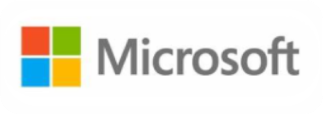Professional developers can now build more effective business solutions utilizing the Microsoft Power Apps and Power Platform than ever before with the help of Microsoft Power Platform developer tools. Managed environments with guardrails implement organizational regulations and promote best practices, leading to speedier development and more secure applications.
Developers Can Now Quickly
- Use Microsoft Power Apps to build cross-platform, low-code apps for mobile and the web that meet stringent security standards.
- Robotic process automation with low-code Microsoft Power Flows and over a thousand connectors allow for seamless integration with both internal and external systems.
- Create visually stunning websites with intricate membership, content management, and data access needs using Microsoft Power Pages.
Also Read: What’s new in Azure Data, AI, & Digital Applications?
How can the Microsoft Power Platform Help?
Below are a few of the ever-expanding capabilities of the Microsoft Power Platform:
Rapidly developing enterprise-level apps
The development of business applications can be challenging because of the many elements that must be taken into account, including but not limited to: storage needs, security, compliance, scalability, user interface design, and application requirements. With the Microsoft Power Platform, developing apps for businesses is a breeze.
- Applications that are both accessible and responsive can be built once and then run on any device, desktop or mobile.
- Using a drag-and-drop interface, reusable user interface components are developed using the React framework.
- Microsoft Visual Studio Code is a great tool for developing and deploying React components. These components can be used for a single application or shared across several projects using a centralized repository.
- Metadata, executable code, and data import files are all conveniently packaged together for app deployment. If needed, Canvas apps can be distributed to end users as native mobile apps through various channels such as Apple Business Manager, Google Play, Microsoft Intune, and Visual Studio App Center.
- With native offline functionality, data operations are automatically stored in a local MySQL database and replayed when the network is restored.
- As part of its automated testing pipelines, Test Engine uses Playwright to run UI tests.
- By utilizing Azure PowerShell, Microsoft Azure Pipelines, or GitHub actions, the entire process of solution creation, deployment, and environment management may be automated with the help of the Microsoft Power Platform CLI.
- Power Pages allows for the rapid creation of public-facing websites, which may then be modified using Visual Studio Code. These websites include built-in support for caching and a content delivery network (CDN) thanks to Azure-deployed ASP.NET. Sites can build sophisticated one- or multi-page apps using the in-built Web API and a configurable security provider.
Everything is Connected
Integrating and connecting all of your organization’s data sources is essential for effective business solutions, especially when dealing with data kept in several locations and external services that are typically critical to company processes.
- Assembling becomes much simpler using the Microsoft Power Platform.
- Without configuring or deploying an Azure subscription, event-driven orchestrations built on top of OpenAPI and Microsoft Azure Logic Apps are possible with the help of a library of over a thousand connectors.
- Building ASP.NET Web APIs in Microsoft Visual Studio makes them ideal for use as bespoke connectors. With the Connected Services configuration in Visual Studio for Microsoft Power Platform, debugging through dev tunnels is a breeze.
- For real-time analytics within OneLake, you can leverage Dataverse Synapse Link and Dataverse Link to Microsoft Fabric data.
- In order to import or synchronize data from several sources, dataflows in the Microsoft Power Platform utilize Power Query.
- Platform as a service for data
- The success of any business application depends on the data storage solution’s security, performance, and scalability. With Microsoft Dataverse as its foundation, the Microsoft Power Platform streamlines this process.
Use the Power of Dataverse
An Azure-based, highly available data platform, Dataverse offers the same reliability, scalability, compliance, and security as Azure SQL, Azure Cosmos DB, Azure Data Lake, and Azure Blob Storage, among other features.
- Information is metadata-driven and may be accessed in a very contextual manner; it can be relational, blob, or unstructured. This metadata may be utilized to automatically construct fully complete apps, and AI can be employed to conduct queries utilizing natural language.
- You can see all of your data without having to build extra logging and monitoring solutions, thanks to uptime assurances and monitoring tools.
- To make your data accessible to other apps that are constructed using conventional software tools, you can use an Open Data Protocol (OData) Web API and connector.
- Automated, aesthetically pleasing report and dashboard creation in Microsoft Power BI is possible with the Dataverse SQL endpoint.
- Dataverse can be enhanced with bespoke business logic and APIs built in C# and executed within the Dataverse platform.
- Native integration with Microsoft Azure Service Bus makes easy extension using Azure Functions, Event Hubs, and Event Grid possible.
- You may surface, query, and link non-Dataverse data sources to regular Dataverse tables using virtual tables. With pre-built support for Azure SQL, SharePoint, and C# custom providers, it’s a breeze to create apps that effortlessly integrate various data sources.
- There’s no need to add development or management because of the built-in audit log capabilities and long-term data retention features. You may track changes and store infinite data long-term in a cost-efficient way.
- Using the AI-powered Dataverse search, users can find data and documents in Dataverse quickly and easily.
Also Read: A Complete Guide to Migrating from Microsoft Dynamics NAV to Business Central
Support for native AI
- Azure Bot Service allows for the rapid configuration, training, and deployment of conversational bots for usage within Microsoft 365 or on externally facing websites.
- It is simple to train complex AI models for document, picture, and sentiment identification and then put them to use in corporate applications.
- Microsoft Copilot Studio allows users to train conversational AI copilots using data from both internal and external scenarios and then build them using a graphical user interface.
- When combined with prompt engineering, OpenAPI connectors allow for the construction of Copilot plugins.
- Business applications can have copilots automatically added to them to provide a user-friendly interface for accessing pertinent data and information through natural language.
Efficiency and Expansion
You may avoid the hassle of building your own platform by using the Microsoft Power Platform, which is built on Azure and has already been tested and verified. The ability to automatically scale up or down means it can handle massive amounts of data and thousands of users. The Microsoft Power Platform can be expanded through different entry points, such as custom connectors, custom controls, service bus integration, and C# plugins that use lower-level tools and technologies. This is possible when performance can not be achieved at a higher level of abstraction. For better versioning and dependency management, many of these extensions can be deployed using solutions from the Microsoft Power Platform.
Use and authorization
Once an application is installed, it can be quite challenging to determine how much Azure resources will be needed by it. using Microsoft Power Platform, you can better anticipate your costs using seat-based licensing. Services like AI Builder and Copilot Studio use consumption-based licensing.
If you’d rather pay for what you use, the pay-as-you-go plan for Power Apps and Power Automate does allow you to use an Azure subscription.
And last, how about low-code?
Every software developer knows the struggle: there aren’t enough hours in the day. It is often acknowledged that a team’s productivity does not necessarily increase as the number of developers increases. One common motivation for embracing new tools and technologies is the need to reduce code complexity, which in turn speeds up development, reduces the likelihood of defects, and facilitates compliance with standards, particularly those pertaining to security. When it comes to creating software for professionals, this is precisely what Microsoft Power Platform does.
With Microsoft Power Platform, developers can access a wealth of features with little to no code required, which speeds up the development process. Deployable to both cloud and on-premises servers, it can be modified using popular languages like C# and TypeScript for when that becomes necessary. As a result, low-code focuses on writing less code, which in turn makes it easier to maintain, support, and update, freeing up resources for feature innovation. It is critical to consistently maintain up-to-date software libraries in order to prevent security vulnerabilities and deprecations. One perk of reducing code is that Microsoft Power Platform rarely eliminates features and is constantly patched for security issues.
Conclusion
Building low-code solutions becomes easier with Microsoft Power Platform, which not only reduces software development time and effort but also lowers the barrier to entry. Microsoft Power Platform offers a collection of tools that builds upon that. It is compatible with other solutions, may be enhanced with them, and can be expanded using standard software development methods. Consider Microsoft Power Apps and Microsoft Power Platform developer tools so that you can free up more time to write interesting, novel, and powerful solutions by reducing the amount of boring boilerplate code.






